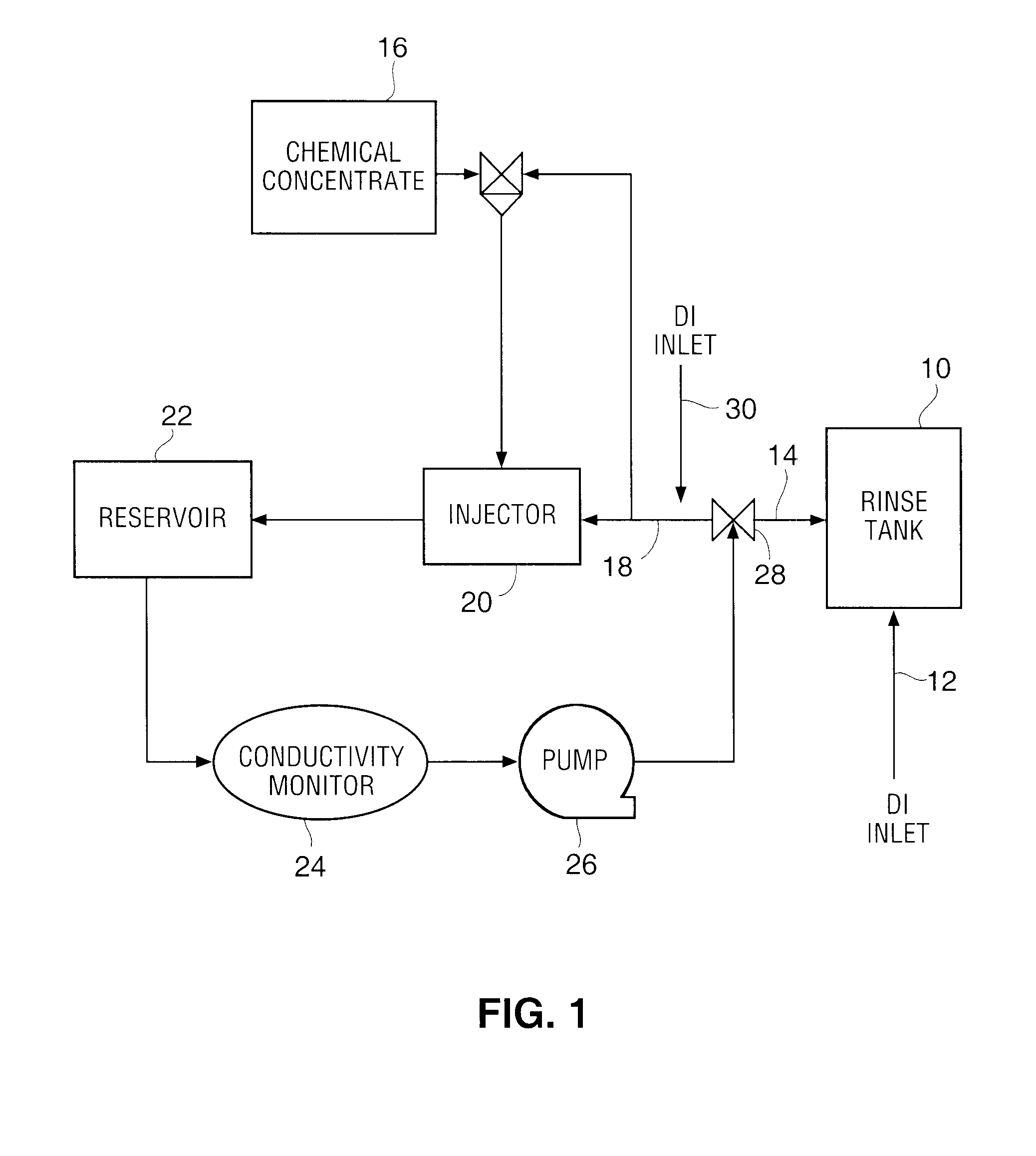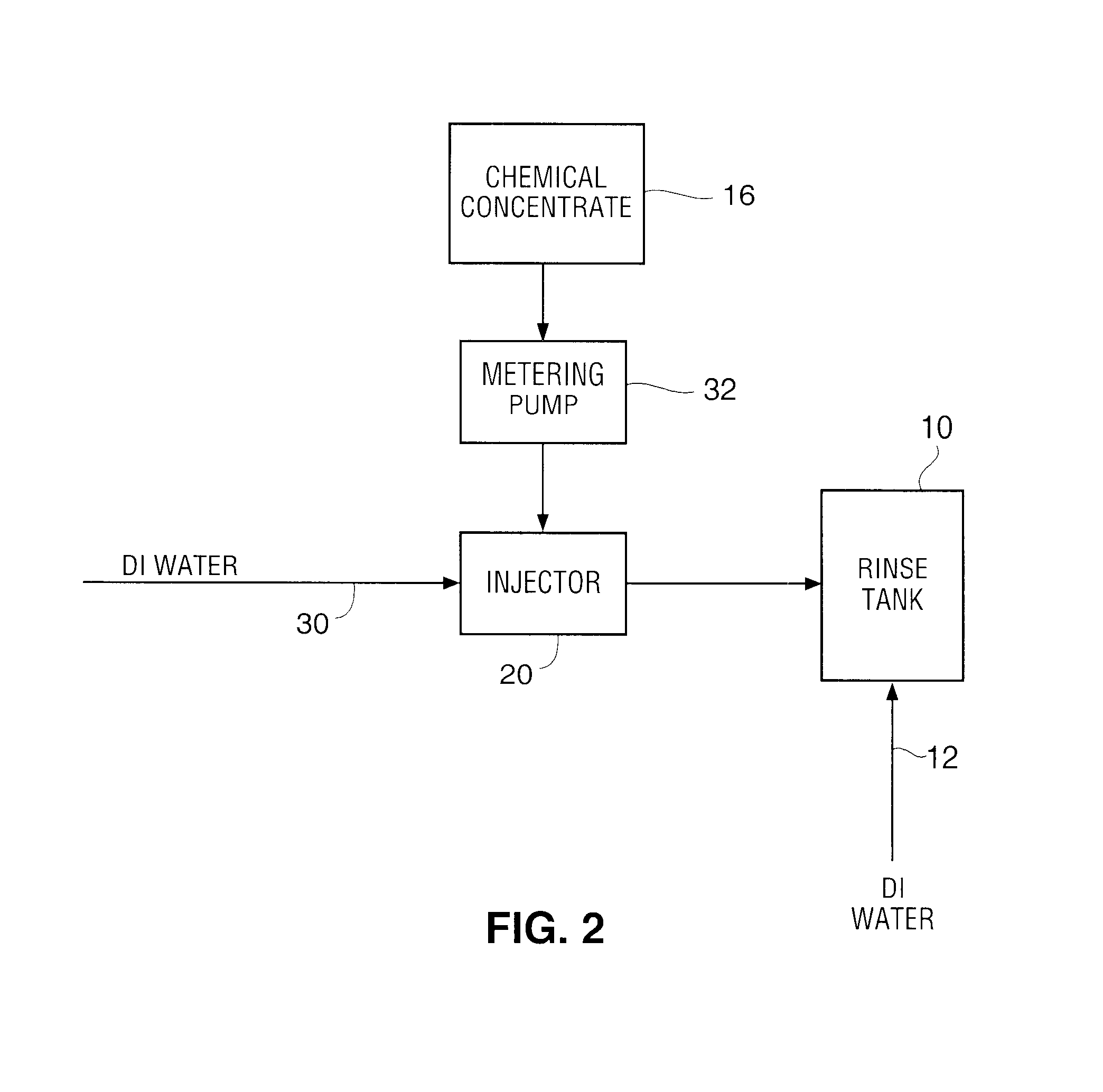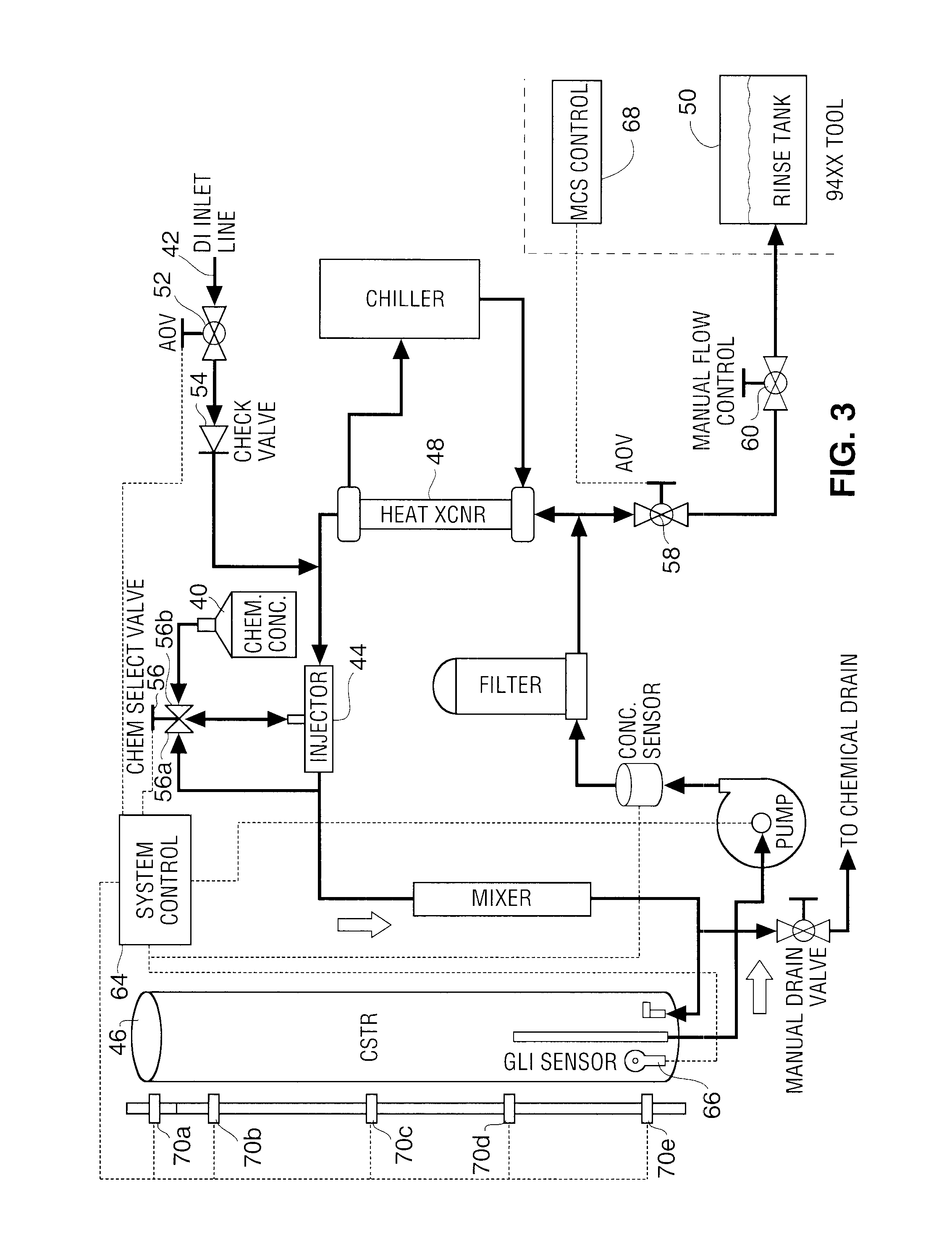Process and system for rinsing of semiconductor substrates
a technology of semiconductor substrates and rinsing steps, which is applied in the direction of detergent compositions, detergent compounding agents, liquid cleaning, etc., can solve the problems of metal corrosion, serious drawbacks of the use of isopropanol as an intermediate rinsing step, and the complex metalization system used in modern integrated circuits
- Summary
- Abstract
- Description
- Claims
- Application Information
AI Technical Summary
Benefits of technology
Problems solved by technology
Method used
Image
Examples
Embodiment Construction
The invention as described herein finds its primary use in back-end-of-the-line (BEOL) semiconductor processing, that is, in the rinsing of metallized substrates. The bulk of the following description will focus on that utilization. However, as will be described hereinafter, aspects of the invention are also usable in front-end processing of substrates that have not been metallized, and reference to such use will be made where appropriate.
According to this invention there is provided a method and a system or apparatus for rinsing or cleaning metallized semiconductor substrates, wafers, etc. The invention substantially prevents metal corrosion when put into use after residue removal in corrosive wet processing sequences, such as in back-end-of-the-line (BEOL) chemical process sequences, but does not require additional process vessels or steps beyond those already used. It is useful in a variety of processes, including those involving passivation, pitting inhibitors, and surfactants.
M...
PUM
| Property | Measurement | Unit |
|---|---|---|
| anti-corrosive | aaaaa | aaaaa |
| corrosion | aaaaa | aaaaa |
| anti-corrosive | aaaaa | aaaaa |
Abstract
Description
Claims
Application Information
 Login to View More
Login to View More - R&D
- Intellectual Property
- Life Sciences
- Materials
- Tech Scout
- Unparalleled Data Quality
- Higher Quality Content
- 60% Fewer Hallucinations
Browse by: Latest US Patents, China's latest patents, Technical Efficacy Thesaurus, Application Domain, Technology Topic, Popular Technical Reports.
© 2025 PatSnap. All rights reserved.Legal|Privacy policy|Modern Slavery Act Transparency Statement|Sitemap|About US| Contact US: help@patsnap.com



